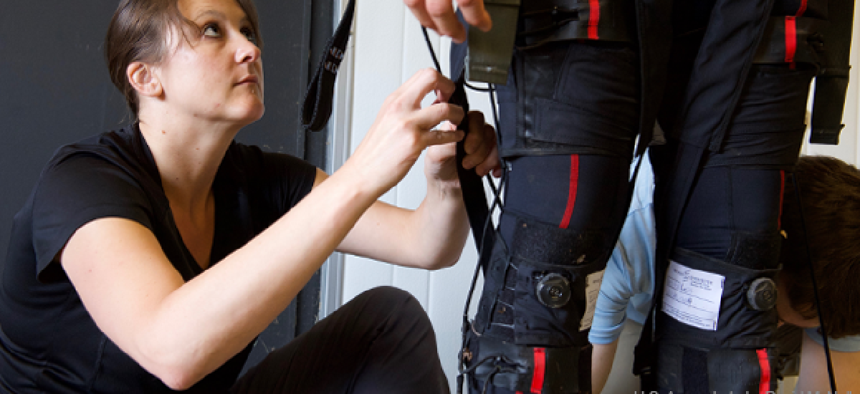Making man more machine


Connecting state and local government leaders
The Army wants an exoskeleton to improve strength, endurance and ergonomics of warfighters.
The line between man and machine grows cloudier every day. The Army is looking to blur that line even further with the development of exoskeletons “designed to improve strength, endurance, and ergonomics” of warfighters.
Dismounted warfighters often carry 100 lbs. of gear, which "increases fatigue, reduces movement and maneuver, and increases the likelihood of acute and chronic musculoskeletal injuries, ultimately weakening mission effectiveness and readiness,” a request for information reads.
And while the military works to make equipment lighter, it is also looking for ideas on making soldiers stronger using three different types of exoskeletons: those for infantry; those for logistics, sustainment and mission support; and those that would reduce the physical work associated with specific applications such as explosive ordnance disposal. Each of these exoskeletons would be optimized for different levels of mobility and tasks.
The Army also outlined nine tasks the exoskeleton should be able to support, including the ability to walk in a crouching position while wearing a fighting load of between 75 and 90 lbs., the ability to carry a casualty that weighs up to 270 lbs. and the power to pry or remove heavy obstructions to rescue the wounded.
The military has been interested in exoskeletons for several years.
In 2013, the Defense Advanced Research Projects Agency's Warrior Web program created an lightweight exoskeleton that could be worn under a uniform to reduce injuries and fatigue. In 2014, it awarded a $2.9 million grant to Harvard University’s Wyss Institute for Biologically Inspired Engineering to continue work on the Soft Exosuit that monitored a walking soldier's leg muscles and tendons and provided "small but carefully timed assistance at the joints of the leg without restricting the wearer’s movement."
The Army wants to see demonstrations of proposed exoskeletons in the summer of 2018 when it will compare them to solutions in development and already in the field.
More information is available here.
NEXT STORY: Waymo Maintains Lead in Self-Driving Car Race




